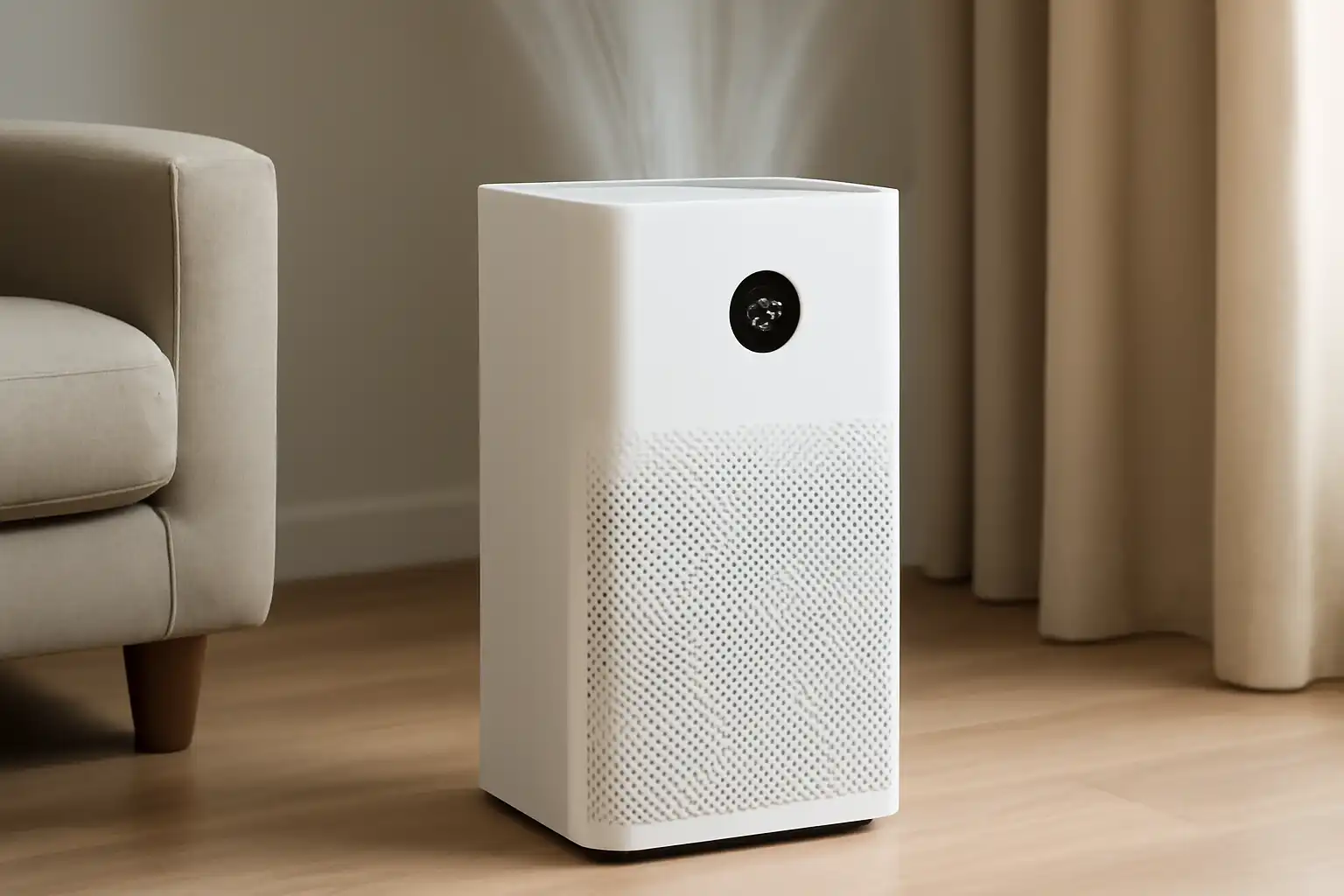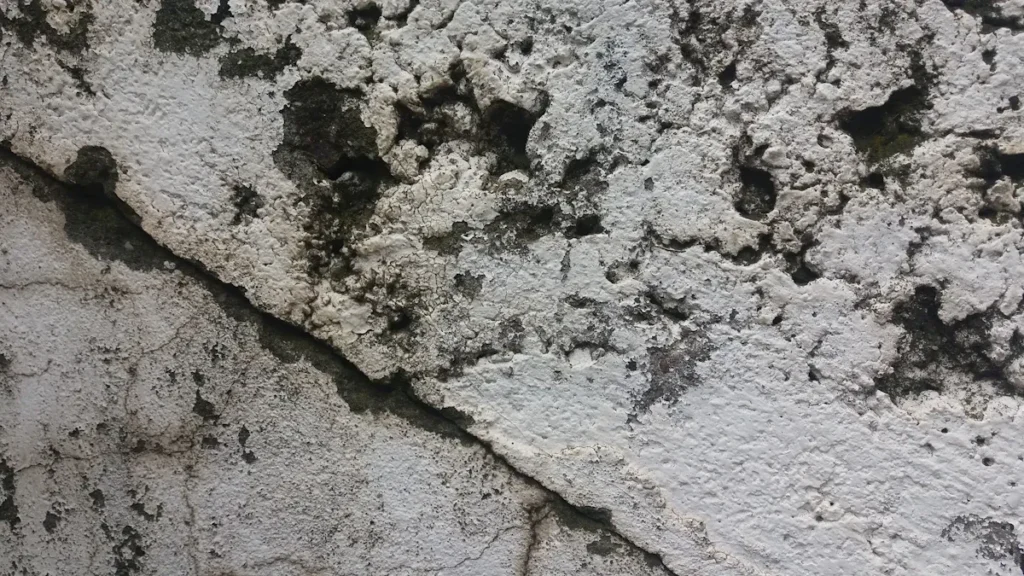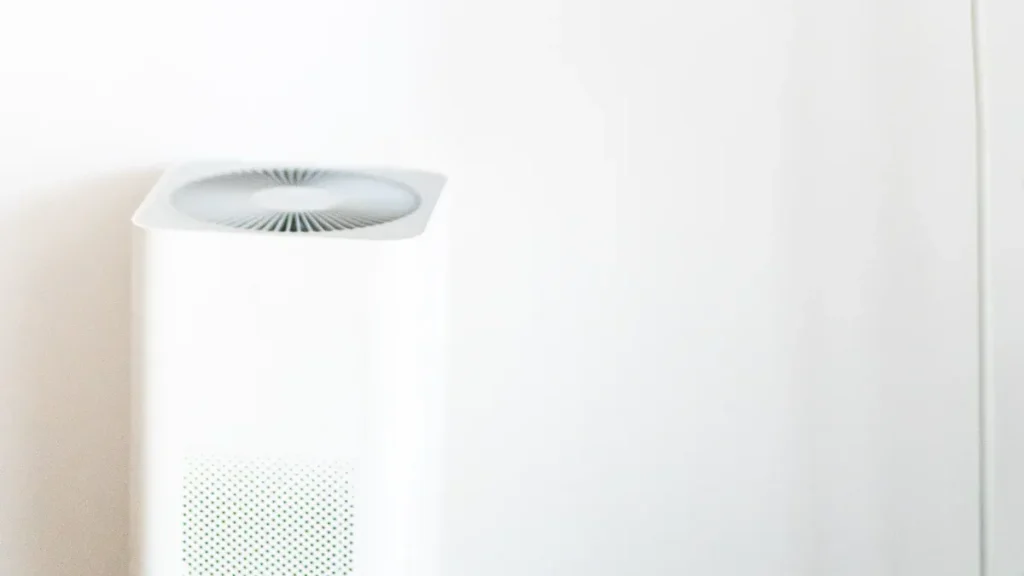
You may notice mold in your home more often than you think. A 2008 study showed that about 24% of U.S. homes had moisture or mold problems. A 2022 report suggests nearly half of homes have dampness or mold. An air purifier can help you remove airborne mold spores from your indoor air. However, it cannot clean mold that grows on surfaces.
Key Takeaways
- Air purifiers with true HEPA filters can take out almost all mold spores from the air. This makes the air inside your home cleaner and better for you to breathe.
- Air purifiers cannot get rid of mold that is growing on walls, ceilings, or other surfaces. You need to clean and dry these spots yourself to stop mold from growing.
- The best way to keep mold from coming back is to control moisture. Fix leaks and keep indoor humidity between 30% and 50%.
- It works better to use a few small air purifiers in wet rooms like bathrooms and kitchens. This is better than using one big air purifier for the whole house.
- If you use air purifiers along with regular cleaning, moisture control, and good airflow, your home will be healthier. This also lowers the chance of mold problems.
Mold and Spores

Types of Indoor Mold
Many types of mold can grow inside your house. Mold spores float in the air. They land on wet places and start to grow. If you have leaks or high humidity, mold grows fast. The most common indoor molds are:
- Cladosporium
- Penicillium
- Aspergillus
- Alternaria
- Stachybotrys chartarum (often called black mold)
These molds can show up on walls, ceilings, carpets, and even in your vents. Mold spores get into your house through doors, windows, vents, and HVAC systems. Once inside, they like damp or humid spots. The CDC and NIEHS say these molds are often found indoors. You might see mold in bathrooms, basements, kitchens, or places with water damage.
Tip: The best way to stop mold is to control moisture in your home.
Health Effects
Breathing in mold spores can hurt your health, especially if you have allergies or asthma. Mold can cause many symptoms. You might have:
- Sneezing or a runny nose
- Coughing or wheezing
- Itchy or watery eyes
- Skin irritation
- Sore throat
- Chest tightness or trouble breathing
People with asthma, allergies, or weak immune systems are at higher risk. Mold can make asthma worse or even cause new asthma. Studies show breathing problems like wheezing, rhinitis, and sinus issues are common from indoor mold. Kids who live with mold have a bigger chance of getting breathing infections and symptoms. Mold can also bother your eyes, skin, nose, and throat, even if you do not have allergies.
Note: How bad your symptoms are depends on your health, sensitivity, and how much mold is in your home.
Air Purifier Effectiveness

HEPA Filters
HEPA filters are very good at catching mold spores in the air. They can trap almost all particles that are 0.3 microns or bigger. This includes most mold spores. In lab tests, scientists put mold spores in a closed room. They ran a HEPA filter for one hour. After that, there were a lot fewer mold spores and bacteria in the air. The spores might still be alive on the filter. But they are not floating in your air anymore. This means you will not breathe them in.
You can look at the table below to see how HEPA filters work compared to other types:
| Filtration Technology | Pros | Cons |
|---|---|---|
| HEPA Filters | Capture 99.97% of particles ≥0.3 microns, including mold spores; no ozone | Do not remove gases/odors; need regular replacement; possible microbial growth if not replaced |
| Activated Carbon | Absorbs gases, fumes, and odors | Does not capture mold spores; usually paired with HEPA |
| PECO | Oxidizes pollutants; hospital-grade in large machines | Home units lack certification; uncertain effectiveness |
| UV Filters | Kill bacteria and viruses | Do not filter particles like mold spores |
| Ionic Filters | Electrify particles to collect on plates | Poor particle capture; can create ozone |
| Ozone Generators | Kill odors and microorganisms at high levels | Unsafe for occupied spaces; not for general air cleaning |
HEPA filters use different ways to catch mold spores. These ways include interception, impaction, and diffusion. HEPA filters work better than normal HVAC filters. They also do not make harmful ozone. Some air purifiers use HyperHEPA filters. These can catch even smaller particles, down to 0.003 microns. They do this with 99.5% efficiency. This gives you more protection from tiny mold spores. Tiny spores can be worse for your health.
Tip: It is often better to use a few small air purifiers in different rooms. One big unit for the whole house may not work as well.
UV-C Light
Some air purifiers use UV-C light to fight mold spores. UV-C light can hurt the DNA of mold spores. This can stop them from growing and making more mold. In HVAC systems, UV-C lamps can kill most mold on coils. They can also lower the number of mold spores in the air. Studies show UV-C lights in these systems help reduce germs. People may have fewer breathing problems when these lights are used.
But UV-C light has some limits. Mold spores are tough and need a lot of UV-C light for a long time to be destroyed. Most home air purifiers move air too fast for UV-C light to work well. UV-C light only works on spores that pass right through the light. It cannot reach mold that is hiding in walls or carpets. Dead mold spores can still cause allergies. So, you still need to clean surfaces. UV-C bulbs get weaker over time. You need to change them every 6 to 12 months.
Note: UV-C light works best when used with HEPA filters and regular cleaning. It should not be the only thing you use.
Activated Carbon
Activated carbon filters help your air purifier do more than just catch mold spores. These filters soak up gases, fumes, and smells from mold. Mold makes chemicals called VOCs and mycotoxins. These can make your house smell bad and may hurt your health. Activated carbon filters trap these chemicals and lower their amount in your air.
Studies show that activated carbon filters can lower harmful mycotoxins in the air. These include aflatoxins and ochratoxin A. The table below shows how much these filters can reduce these chemicals:
| Compound | Standard Filter (µg/kg) | Activated Carbon Filter (µg/kg) |
|---|---|---|
| Total Aflatoxins (B1, B2, G1, G2) | 5.37 | 2.43 |
| Aflatoxin B1 | 1.71 | 0.65 |
| Ochratoxin A | 0.96 | 0.55 |
When you use an air purifier with both HEPA and activated carbon filters, your air gets much cleaner. It removes both mold spores and the chemicals mold makes.
Air Purifier Limitations
Surface Mold
You may think an air purifier can solve all your mold problems. This is not true. Air purifiers trap mold spores floating in the air. They do not remove mold that grows on walls, ceilings, or other surfaces. Mold needs moisture to grow. Air purifiers do not control moisture. You must clean mold from surfaces by hand or hire a professional. Mold colonies on surfaces will keep growing if you do not remove them. Even the best HEPA filter cannot stop mold from spreading on damp walls or floors. You need to scrub, clean, and dry these areas. Sometimes, you may need special mold restoration services.
Note: Air purifiers help with air quality, but they are not a complete solution for mold on surfaces.
Moisture Issues
Mold cannot grow without water. If you do not fix leaks or lower humidity, mold will return. Air purifiers do not dry out your home or fix water problems. You must find and fix the source of moisture. This could be a leaky pipe, a wet basement, or high humidity in your bathroom. Experts like the EPA and health departments say you must control moisture to stop mold from coming back.
- Mold cannot grow without moisture, so moisture control is essential.
- The EPA and other experts say you must fix leaks and dry wet areas to prevent mold.
- Cleaning mold without fixing water problems means mold will return.
- Mold removal steps include drying, cleaning, and using protective gear.
- If you see mold again, you likely have an unresolved moisture issue.
You can use fans, dehumidifiers, and better ventilation to keep your home dry. These steps, along with cleaning, will help prevent mold. An air purifier is a helpful tool for cleaner air, but it cannot replace moisture control or surface cleaning.
Mold Control Tips
Using an Air Purifier
You can use an air purifier to help reduce mold spores in your home. To get the best results, follow these steps:
- Choose a model with a true HEPA filter. This type captures almost all mold spores in the air.
- Place the air purifier in rooms where you notice moisture or poor airflow, such as bathrooms, kitchens, or laundry rooms.
- Run the air purifier all day and night. Continuous use keeps the air cleaner and lowers mold spore levels.
- Replace the HEPA filter every few months, or as the manufacturer suggests. Clean the outside and vents of the unit each month.
- Make sure the air purifier fits the size of your room. Check the Clean Air Delivery Rate (CADR) for guidance.
Tip: Use more than one air purifier if you have several problem areas in your home.
Humidity Control
Mold grows fast in damp places. You can stop mold by keeping your indoor humidity low. The Environmental Protection Agency recommends these steps:
- Keep indoor humidity between 30% and 50%. Use a hygrometer to check levels.
- Use dehumidifiers in basements or other damp rooms.
- Turn on exhaust fans in bathrooms and kitchens when you cook or shower.
- Open windows when weather allows to let fresh air in.
Keeping humidity below 50% helps prevent mold and dust mites.
Source Removal
You need to remove mold at its source to keep it from coming back. Mold experts recommend these actions:
- Find and fix leaks in pipes, roofs, or walls right away.
- Remove and throw away items like wet carpets or drywall that have mold.
- Clean hard surfaces with soap and water, then use a mold-killing cleaner.
- Dry all cleaned areas completely.
- Check for mold in hidden spots, such as behind furniture or inside closets.
Regular checks and quick repairs help stop mold before it spreads.
You can use an air purifier to help lower mold spores in the air. This makes the air in your home cleaner. Studies show HEPA filters can remove almost all mold spores in test rooms. They can get rid of up to 99.9% of these spores. But to fully protect your home, you need to do more. You should also control moisture and clean often. Experts say to put air purifiers in damp rooms. You should keep humidity under 50%. Fix any leaks you find. Doing these things helps your home stay healthy. It also stops mold from coming back.
FAQ
What does an air purifier do for mold in the air?
An air purifier removes mold spores from the air. You breathe cleaner air because the purifier traps these tiny particles. It does not remove mold growing on walls or surfaces.
What type of filter works best for mold spores?
A true HEPA filter works best for mold spores. It captures almost all airborne mold particles. You should look for air purifiers labeled with “HEPA” for the best results.
What should you do if you see mold on surfaces?
You need to clean the mold right away. Use soap and water or a mold cleaner. Dry the area completely. Fix any leaks or moisture problems to stop mold from coming back.
What is the best way to prevent mold in your home?
Keep your home dry. Use a dehumidifier if needed. Fix leaks quickly. Run exhaust fans in bathrooms and kitchens. Air purifiers help with spores, but moisture control stops mold from growing.
What are signs that you might have mold in your home?
You might see black, green, or white spots on walls or ceilings. You may smell a musty odor. You could notice more allergy symptoms. If you see or smell these signs, check for mold.
